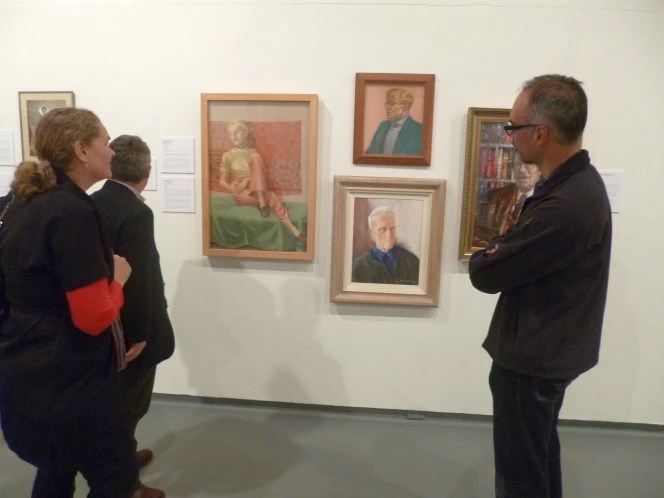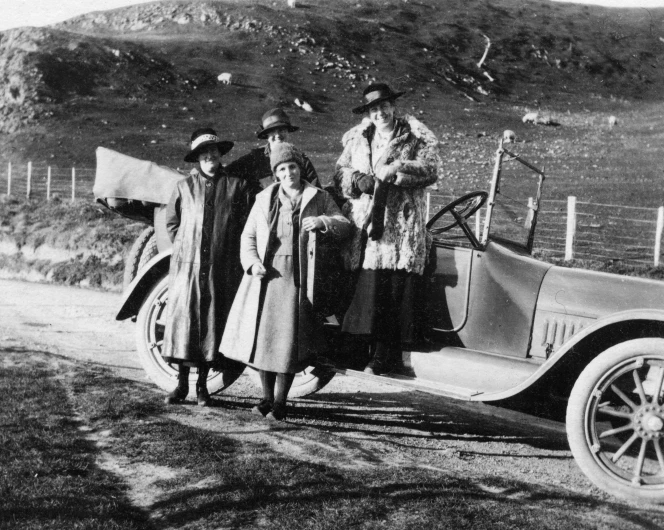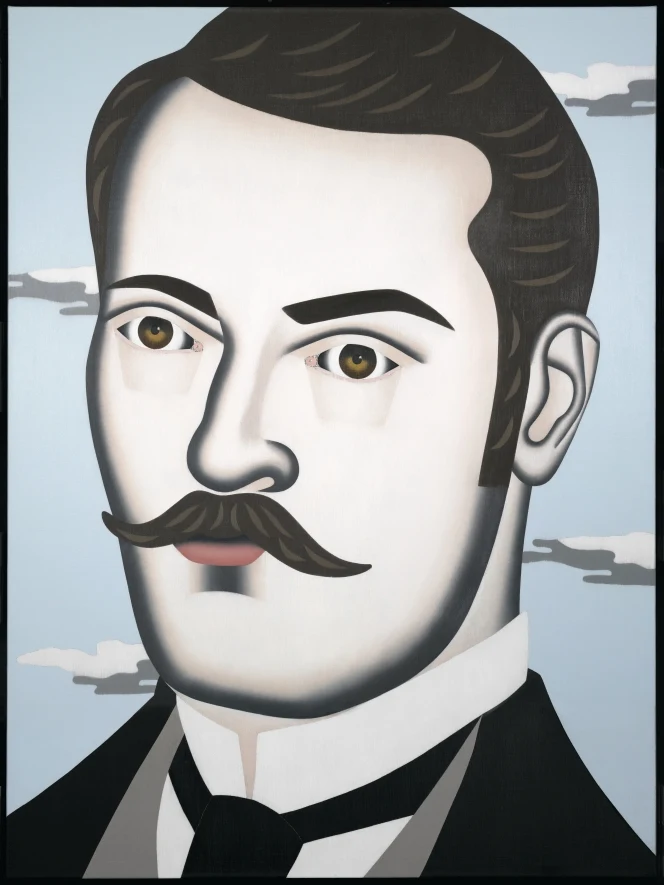'Capital Characters' and the Turnbull at the New Zealand Portrait Gallery
On 26 July 2015, Wellington has its 150th birthday as New Zealand’s capital city. Locals can look forward to a range of celebratory occasions, a welcome change, some might say, from all those ongoing World War One commemorations.
One of the first such events is the exhibition I have curated for the New Zealand Portrait Gallery - Capital Characters: Wellington Portraits from Then to Now - opening on 11 June. It presents a very wide range of Wellingtonians, portrayed by many different kinds of portraiture. It works as a history exhibition too, about Wellington since 1840.
This blog is about the Turnbull Library’s contribution to the exhibition. The selected portraits have come from many different places but the biggest single lender is the Turnbull. That is partly because, after twenty-five years as a Turnbull curator, I had some favourites I wanted to use. Mainly, though, it is because of the particular richness of the Turnbull collections in regard to portraiture.

Rachel Esson, Paul Diamond and Chris Bourke on the opening night of Capital Characters at the New Zealand Portrait Gallery. Photo: Joan McCracken
Perhaps I should insert a definition of portraiture here. It is one not limited to the painted portraits of the great and the good, or just those works seen as worthy of an art gallery (although there are certainly many such examples in the exhibition). I prefer the wider definition suggested by Roger Blackley in his seminal essay, A Nation’s Portraits, published in 2005. Portraits, he wrote, have:
“A wide range of contexts, in small towns and large, in private houses and public buildings, as grand oil paintings and modest photographs in family albums.”
Collecting such things is at the heart of what the Turnbull does – part of its brief to build up a repository of documentary heritage capable of supporting all kinds of New Zealand studies. That includes images of people, painted, drawn, and photographed, collected for their informational value, irrespective of any artistic merit. It means, Blackley went on to say, that:
“The Alexander Turnbull Library must qualify as New Zealand’s pre-eminent national repository of portraits”.
Inevitably an exhibition like Capital Characters does depend on portraits by well-known and respected artists, and many of these have come from other institutions, like Te Papa and the Wellington City Council, and from private collectors. For example, the exhibition features three large privately-held portraits of Peter McLeavy by Ian Scott, Sir Bob Jones by Garth Tapper and Sir Rod and Lady Gillian Deane by internationally-known Chinese-Australian artist Shen Jiawei. None have been exhibited before.
But there are several fine portraits from leading artists from the Turnbull as well. This portrait by Douglas MacDiarmid of pioneering art gallery proprietor Helen Hitchings is one example.

Douglas MacDiarmid. Helen Hitchings, 1950. Oil on board, 870 x 595 mm, Ref: G-390 Alexander Turnbull Library.
MacDiarmid is a New Zealander who has spent most of his life as an expatriate artist in Paris. He spent a year in Wellington over 1949-1950 and was good friends with Hitchings, who had just started her famous but short-lived modernist art gallery in Bond Street. This painting was part of MacDiarmid’s exhibition there.
Other portraits have come from paintings commissioned by the Turnbull during an active period of such commissioning during the later 1970s and 1980s. One of the first was this portrait of historian John Cawte Beaglehole by Evelyn Page. It was commissioned after Beaglehole’s death and was painted from photographs, sketches and memory. It is a good example of Page’s rich use rich use of colour and paint texture.
Other commissions include a series of bronze busts of New Zealand writers and artists. Most were by Anthony Stones but the one selected for the exhibition is of Evelyn Page by Terry Stringer. It is strikingly angular piece, very different from the rounded forms most of us now associate with Stringer.
Others come from the nineteenth century. This 1830s portrait, possibly by English artist George William Jackson, is of William Swainson, noted naturalist and illustrator (shown here sketching a dead parrot by candlelight).
Oil on canvas, 894 x 692 mm, Ref: G-499 Alexander Turnbull Library.
Swainson was an early Wellington settler, duped by the extravagant promises of the New Zealand Company, whose efforts to establish himself as a gentleman farmer proved a costly failure.
This watercolour sketch of Mary Greenwood by her mother is typical of many other Turnbull portraits – domestic sketches by those with some artistic ability but no professional pretensions.
The sketch was done at the Greenwood family home in Nelson. I had used this image in an earlier exhibition but did not realise until researching Capital Characters that, as an adult, Mary was an interesting Wellingtonian. She decided not to marry, bought a house on the Terrace and turned it into a school for young ladies. Such work was one of the only employment options available for educated single women.
Elsewhere in the exhibition is a display headed “sketchers and doodlers” which looks at some of the many examples of portrait sketching by artists of widely varying abilities. All are from the Turnbull collections. Here is one, a felt-tip, note-pad sketch of William Ball (Bill) Sutch, the influential economist writer and thinker. It was done by an unknown artist while Sutch was giving one of his popular talks at a Workers’ Educational Association summer school.
If one was to quantify the Turnbull portraits holdings most of them, by far, would be photographs. Photographers have been taking portraits of all kinds since the camera was first invented. Here are just three examples from the exhibition. The first is a portrait of New Zealand cricketer, John Reid, captain and hard-hitting batsman, the Brendan McCullum of his day.
It was done by Crown Studios in Cuba Street, who specialised in sports team photographs during the middle years of last century, and is utterly unpretentious. Youthful sports stars are very seldom the subject of more serious portraiture. Nevertheless, Reid’s confidence and panache shine through.
The cumbersome requirements of early photography required some dedication on the part of its practitioners. One keen late nineteenth-century amateur was Wellingtonian businessman Henry Wright whose surviving photographs include many striking images of landscapes and people. Many are lost, but for 435 of his glass plate negatives, discovered in the basement of a Newtown house in 1976, and given to the Turnbull Library.
Here is one of his images.
This image has long fascinated me. Who were these Māori residents? Why has their story been so completely forgotten? I have managed to find out a little more, which you can read here. It is a poignant image, and, as far as this exhibition is concerned, definitely a portrait.
By the early twentieth century technology was making the amateur snapshot possible for everyone. This photograph shows pioneering woman doctor, and keen motorist, Agnes Bennett, on a country drive with her friends. (Bennett is the one grinning behind the steering wheel). It is slightly out of focus, crooked, and off-centre. It is still good though. I like to think they had just stopped, and asked someone on the side of the road to click the shutter for them.

Unknown photographer. Dr Agnes Bennett and friends, ca 1914. Ref: PAColl-6972-6-23-1, Alexander Turnbull Library.
Finally I should mention the history paintings scattered through the exhibition – works by New Zealand artists that feature their takes on historical figures. I find the differing approaches of such particularly intriguing. Included are works by artists Bob Kerr, Seraphine Pick, Sally Griffin, Hamish Foote, Gavin Hurley, and some pages from Sarah Laing’s soon-to-be-published graphic novel about Katherine Mansfield.
Only one of these comes from the Turnbull collections, but it is one of the best – Gavin Hurley’s outsize portrait of Alexander Turnbull himself, in Hurley’s distinctively pared-down style.

Gavin Hurley. Alexander, 2008. Oil on hessian, 1370 x 1015 mm, Ref: G-830-4 Alexander Turnbull Library.
It will be very familiar to Library visitors, as it has been gazing out from the first floor foyer for several years now. Like all the other portraits in the exhibition it gives a particular interpretation of its subject. This is the dapper, man-about-town Turnbull of the 1890s, just then launching himself into a life’s work of book and document collecting. A portrait of an older Turnbull might be rather different. One visitor described Turnbull shortly before his early death as:
“An ill-favoured evil smelling man who takes no exercise but lives on drugs and gives up all his time to the hobby of collecting books.”
So, there ends a taste of the Turnbull contribution to this exhibition. There is much more, of course, from other institutions and individual collections, many never exhibited before.
This blog has looked at the exhibition by format. But the exhibition is actually laid out very differently than that. It is all organised chronologically (by the life dates of the subjects). Start on the left and work your way around, from 1840 to the present. It’s a romp through Wellington history with some striking contrasts and juxtapositions on the way. I think you will find it a lively mix. One thing is certain - with people like these Wellington has never been a boring place.
Capital Characters: Wellington Portraits from Then to Now is showing at the New Zealand Portrait Gallery, Shed 11, Customhouse Quay, 11 June-23 August 2015
Great exhibition David, I went to see it on Saturday. An intriguing variety of people and portrait styles. The information panels were also packed with interesting sidelights on the subjects.
Can we expect a book version at some stage?